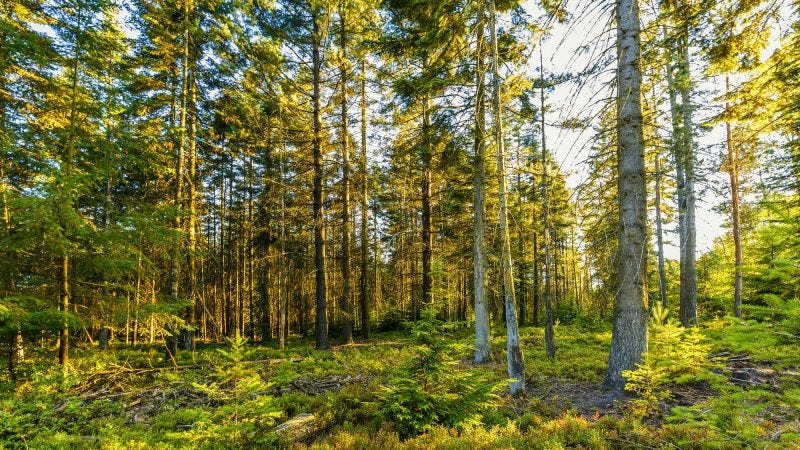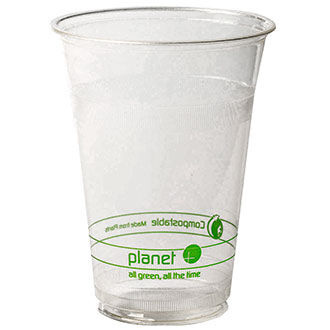The Polymerist is a free newsletter that publishes twice a week with one in-depth article on Tuesdays and a roundup and honest analysis of what happened in the world of chemicals on Fridays. Join the subscriber list to get free updates with honest analysis from someone with a PhD in chemistry from the industry.
Biomass To The Rescue? Not So Fast.
In the utopian future that many academic green chemists envision is one that is not dependent on oil. All of our polymers, lubricants, fuels, plastics, and anything a chemist can think of making at scale for either human or industrial use would come from biomass. Sure, this is somewhat of a hyperbolic view that I am purporting here, but I am doing this to try and demonstrate that we cannot put all of our hopes and dreams of figuring out a circular economy on the basis of biomass conversion alone.
Full disclosure here, my PhD was based on this sort of utopian dream and after about 5 years in the chemical industry I am more aware of how difficult and seemingly impossible that sort of dream is in the next 50 years, maybe even in the next 100 years.
I will use two of the most viable biomass polymers that have manufacturing at scale as examples on how plastics and polymers from biomass might become a solution to fixing part of the plastic waste problem.
Polylactic Acid (PLA) aka Poly(lactide)
What is PLA?
The open access review article where I am pulling much of this information. I’ve written more about PLA previously here.
Wallace Carothers at DuPont was the first to successfully synthesize PLA in 1932 by heating lactic acid and removing water via vacuum distillation. Chemists would eventually figure out how to cyclize lactic acid into lactide, a cyclic diester comprising two lactic acid molecules, and perform ring opening polymerizations to obtain high molecular weight poly(lactide) that would have properties somewhat similar to polystyrene.
Early use of polymers made from lactic acid was actually in conjunction with glycolic acid to make bioresorbable sutures in 1974 under the trade name of Vicryl. In 2001 Dow and Cargill would come together to form the joint venture NatureWorks to make PLA under the tradename of Ingeo with the intent of pushing PLA into the world of single use plastics, packaging, and general widespread consumer adoption.
Lactic acid right now is primarily obtained from fermentation of sugar, in the US this is primarily sourced from corn, and NatureWork’s production headquarters is based in Nebraska. In 2013 NatureWorks would sell approximately a billion pounds of PLA and since then there has been widespread investment into producing more PLA globally. For instance Total Corbion has announced the planning of a second PLA facility in Europe than can produce 100,000 tons of PLA per year.
The Benefits and Uses of PLA
Poly(lactide) is essentially just a really long chain of lactic acid molecules. When it comes into contact with water and/or enzymes under the right conditions it can degrade into lactic acid, a natural acid that can be processed by our own bodies and by nature. The physical properties of PLA put it somewhere close to polystyrene, one of the big six plastics, and it is often used in single serving uses such as coffee capsules, beverage cups, utensils, and as a water barrier coating for ecofriendly paper cups.
You should understand that traditional paper based beverage cups often have a synthetic polymer coating that provides a barrier against the paper getting wet. This polymeric barrier can make it difficult for paper beverage cups to biodegrade and/or be recycled.
On a more advanced level medical grade PLA can be used to make heart stents, sutures, bone screws, tissue scaffolding, and as a vehicle for slow released drug delivery. Because of PLA’s similarity to polystyrene extensive work has been done to elevate PLA to an engineering material which entails raising its glass transition temperature, reducing creep, and improving the fracture toughness and impact strength.
The purported benefit of PLA ultimately comes into its ability to be composted, but the composting of PLA is only viable under industrial composting conditions. Trying to compost PLA in a backyard compost pile might take a a decade and even longer if it was just thrown on the ground. From a chemistry standpoint PLA is definitely compostable, but this ultimately begs the question of where could we compost it?
The Cons of PLA
Having a plastic based on food production (sugar) is problematic, especially now, when a significant portion of the world’s population is food insecure. 54 million people in the United States are facing food insecurity right now during the writing of this article in part due to Covid-19. Having a greater portion of farmland going towards making a biobased plastic with the reality of food insecurity and hunger going on seems nonsensical. But I suppose our world is often full of nonsensical ideas.
Despite PLA being compostable under very specific conditions there is no widespread network of compositing collection sites. Does PLA actually even fix anything if it ends up in a recycling stream where it cannot be mechanically recycled or if it ends up in the trash and goes to a landfill?
It is easy to be myopic about about PLA from this point of view. Having a non-food source for lactic acid and a fully developed industrial composting supply chain would remove the majority of the cons around PLA.
Cellulose Acetate
Everything Old Is New Again
James A. Moore, a professor at RPI had those words as the title of one of the last posters he would ever present before he became an Emeritus professor at Rensselaer Polytechnic Institute. I worked in his old synthetic polymer lab and his poster was about a chemical called diphenolic acid. I would later go on to use diphenolic acid as a foundational piece to my doctoral thesis and I was a teaching assistant for him in undergraduate organic chemistry labs. Diphenolic acid is obtained from levulinic acid and phenol and is what people used prior to the invention of the cumene process that produced an abundance of acetone and was used prior to bisphenol A. So despite it being very old it was new for my doctoral thesis just like cellulose acetate seems to be now.
An excellent open source review on cellulose acetate can be found here
Cellulose acetate is one of the oldest plastics ever created and the main starting material for cellulose acetate is the most abundance biopolymer on planet Earth—cellulose. Paul Schützenberger discovered that cellulose could react with acetic anhydride in 1865, but 29 years later Charles Cross and Edward Bevan developed cellulose acetate into a plastic around the same time as Leo Bakeland’s invention of Bakelite. Cellulose acetate is sort of a synthetic polymer, but not in the same ways that Bakelite or even PLA is because it actually involves disrupting and modifying cellulose, which is already a polymeric form of glucose.
The plastic that had been dominate before cellulose acetate was cellulose nitrate, which was obtained from nitration of cellulose. The main problem with cellulose nitrate was its propensity to explode and be highly flammable. Cellulose nitrate was known as celluloid and was in widespread use as guncotton in the mid 1850s and for movie films until about the 1950s. Cellulose nitrate is the basis for how Quentin Tarantino planned the assassination of Adolf Hilter in his film Inglorious Basterds through a somewhat common occurrence of a cinema fire. Eastman Kodak produced early photography film with both cellulose nitrate and then transitioned to the safety film known as cellulose acetate.
Think about that for a second. It took about 100 years for cellulose nitrate, a known explosive, to be phased out of commercial production. It should also be noted that the concept of plastic and polymers was controversial and not widely accepted at the time.
Cellulose acetate today is made primarily through reacting cellulose with acetic anhydride until enough substitution of the hydroxyl groups on the cellulose disrupts the cellulose crystallinity and renders the modified polymer soluble in different solvents. Cellulose acetate is versatile, it can be used in injection molding, it can be made into fibers, and it is often the plastic of choice for sunglasses and prescription eyewear.
Using Cellulose Acetate In New Ways
In October of 2020 Celanese, one of the oldest makers of cellulose acetate, launched a new cellulose acetate product for packaging and food contact applications under the tradename of BlueRidge. You can watch the video from Celanese below on the lifecycle of cellulose acetate.
The two major differences between cellulose acetate and PLA are that cellulose acetate can decompose in soil without any special conditions and it comes from a non-food biomass source, specifically wood pulp right now, but other cellulosic sources could also be from grasses such as switch grass or ramie.
Cellulose acetate and other cellulose derived plastics could be the sort of compostable plastic from non-food biomass that could solve a lot of our problems, especially in areas like food packaging and single use plastics. Even if we were to get widespread adoption of cellulose acetate we would still have problems with availability of composting accessibility.
The Composting Problem: We Need More Capacity
If we magically turned every plastic that is currently being produced into something compostable but still maintained all of the amazing physical properties of our current consumer grade plastics we would still probably landfill about 85-90% of this plastic. The problems that synthetic polymer chemists, polymer engineers, microbiologists, and polymer scientists can solve all revolve around producing new materials or modifying old materials to give the markets the properties that are in demand. So if the world wants a compostable plastic from biomass that can perform similar to polyethylene for the same cost I think its possible. It might take some time, but I think its possible.
If we were to solve the problem of making the materials of our dreams we still have the problem of not having a network of composting that could turn those materials back into soil or some sort of feedstock that would be useful. According to the EPA about 24% of our municipal solid waste is compostable. Right now that means it could be paper, yard trimmings, or food waste. If we were able to add in a significant amount of plastics to that percentage we could theoretically achieve >30% compostable municipal waste.
Three Routes to Solve the Plastic Waste Problem
So with the fifth part of this series we have concluded what I consider the three routes of solving the plastic waste problem.
Chemical Recycling could expand what is possible to be recycled including multi-layer plastics that are very difficult to recycle via mechanical methods and much of the current plastics that are not recycled such as polystyrene. This represents a circular economy from oil.
Mechanical Recycling is our traditional route of recycling plastics and is a route that is currently under utilized and also represents a circular economy from oil.
Synthesis and Composting of plastics from biomass represents a potential route for low carbon footprint plastics that could also be transformed into high value compost for agriculture and represent a cradle to grave supply chain.
Part 6 will focus on what what roles the government could play in helping to solve the plastic waste problem.
Tony
The views here are my own and do not represent those of my employer nor should they be considered investment advice.





